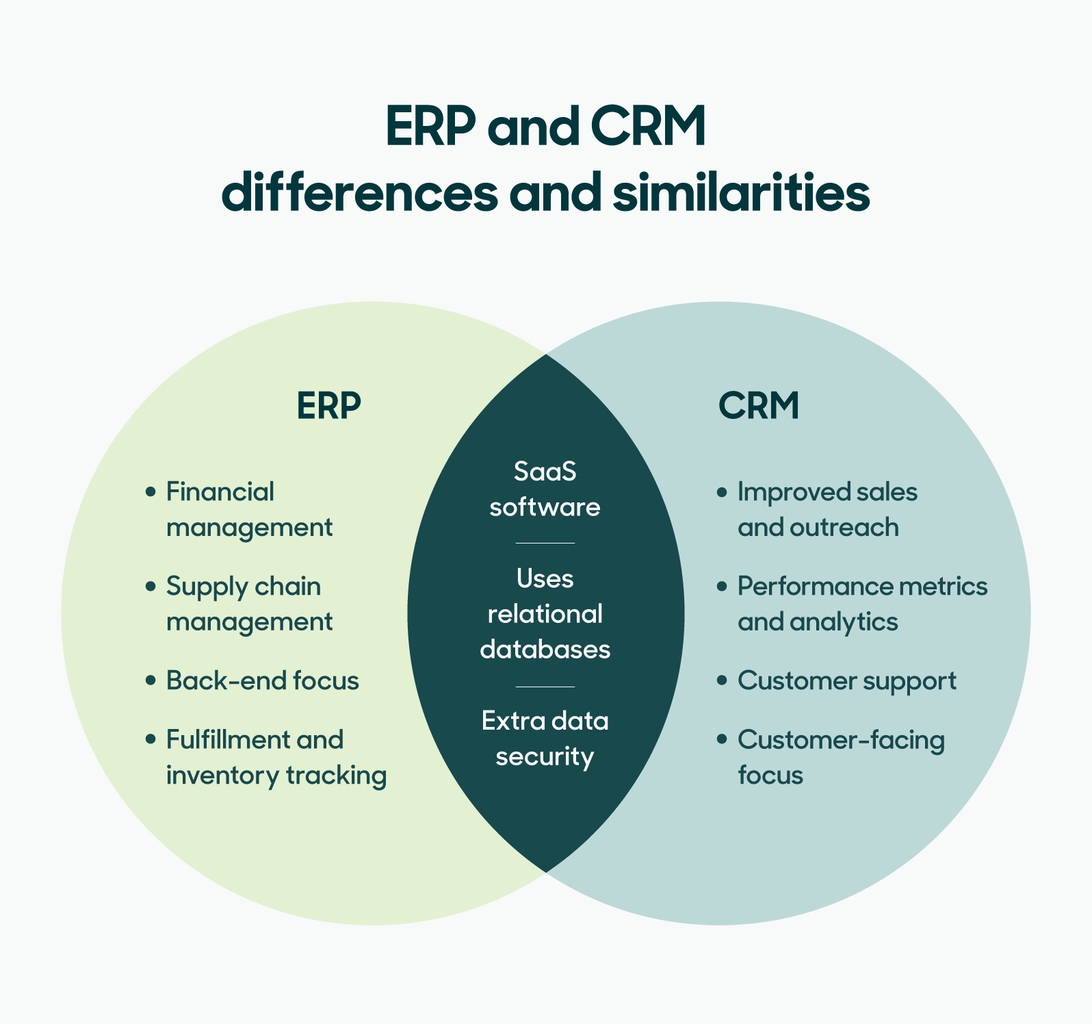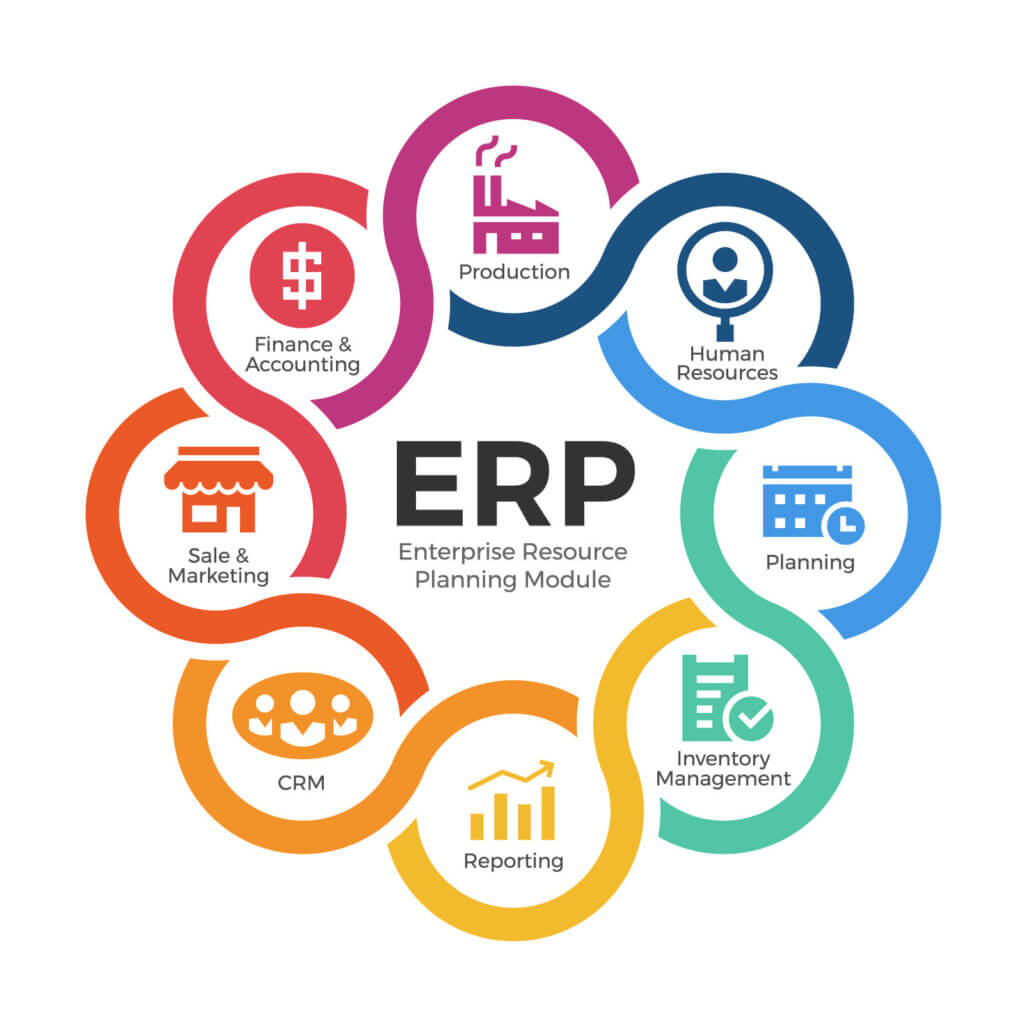In the realm of business technology, CRM ERP tools stand as indispensable allies, empowering organizations to transform their customer interactions, streamline operations, and achieve unprecedented success. With their robust capabilities and seamless integration, these tools are revolutionizing the way businesses engage with customers, manage data, and drive growth.
From the bustling streets of Manhattan to the serene shores of Sydney, businesses of all sizes are embracing CRM ERP tools to enhance customer satisfaction, boost productivity, and gain a competitive edge in today’s dynamic marketplace.
Understanding CRM ERP Tools
CRM (Customer Relationship Management) and ERP (Enterprise Resource Planning) systems are essential tools for businesses of all sizes. They help businesses manage their customer relationships and operations more efficiently and effectively.
CRM systems track customer interactions and provide businesses with a 360-degree view of their customers. This information can be used to improve customer service, marketing, and sales efforts.
ERP systems integrate all of a business’s core functions, including finance, accounting, manufacturing, and supply chain management. This helps businesses to streamline their operations and improve efficiency.
Key Features and Functionalities of CRM ERP Tools
- Customer relationship management (CRM)
- Sales force automation (SFA)
- Marketing automation
- Financial management
- Human resources (HR)
- Supply chain management (SCM)
- Business intelligence (BI)
CRM ERP tools can be deployed on-premise or in the cloud. On-premise deployments require businesses to purchase and maintain their own hardware and software. Cloud deployments are hosted by a third-party provider and can be accessed over the internet.
Types of CRM ERP Tools
CRM ERP tools come in various types, each tailored to specific business needs and preferences. Understanding the differences between these types is crucial for selecting the most suitable solution for your organization.
Cloud-based Solutions
- Hosted on remote servers accessed via the internet.
- Eliminates the need for on-site infrastructure and maintenance.
- Offers scalability, flexibility, and cost-effectiveness.
On-premises Solutions, Crm erp tools
- Installed and managed on the company’s own servers.
- Provides greater control and customization options.
- Involves higher upfront costs and ongoing maintenance expenses.
Hybrid Solutions
- A combination of cloud-based and on-premises components.
- Offers flexibility, customization, and cost optimization.
- Requires careful planning and integration to ensure seamless functionality.
Benefits of CRM ERP Tools
CRM ERP tools provide numerous advantages for businesses, significantly enhancing customer satisfaction and loyalty, optimizing data management and analytics, and driving cost savings and efficiency gains.
Improved Customer Satisfaction and Loyalty
- Centralized customer data:CRM ERP tools consolidate customer information from various sources, providing a comprehensive view of each customer’s interactions with the business.
- Personalized experiences:By leveraging customer data, businesses can tailor marketing campaigns, product recommendations, and support services to meet individual customer needs.
- Improved customer service:CRM ERP tools streamline customer support processes, enabling agents to access customer history and preferences quickly, resulting in faster and more efficient resolution of issues.
Enhanced Data Management and Analytics
CRM ERP tools provide robust data management capabilities, allowing businesses to:
- Centralize and manage large volumes of data:CRM ERP tools offer a central repository for customer, sales, and operational data, eliminating data silos and ensuring data integrity.
- Analyze data to gain insights:Built-in analytics tools enable businesses to extract meaningful insights from customer data, identifying trends, patterns, and areas for improvement.
- Make data-driven decisions:By leveraging data insights, businesses can make informed decisions about marketing strategies, product development, and customer service.
Cost Savings and Efficiency Gains
CRM ERP tools can significantly reduce costs and improve operational efficiency through:
- Reduced manual processes:CRM ERP tools automate many manual tasks, such as data entry, customer follow-ups, and order processing, freeing up employees for more strategic initiatives.
- Improved communication and collaboration:Integrated communication tools facilitate seamless collaboration between teams, reducing miscommunication and improving productivity.
- Increased sales productivity:CRM ERP tools provide sales teams with real-time access to customer information, enabling them to close deals faster and increase sales revenue.
Implementation and Integration: Crm Erp Tools

Implementing and integrating CRM ERP tools effectively is crucial for maximizing their benefits. Here’s a step-by-step guide and insights into best practices.
Step-by-Step Implementation Guide
- Define Business Requirements:Clearly identify the goals, objectives, and processes that the CRM ERP system should support.
- Select a Solution:Evaluate and choose a CRM ERP tool that aligns with business requirements, industry best practices, and budget.
- Data Migration:Transfer existing data from legacy systems or other sources into the new CRM ERP system.
- Customization and Configuration:Tailor the CRM ERP tool to meet specific business needs, including customizing workflows, fields, and reports.
- Training and Adoption:Provide comprehensive training to users and encourage adoption through ongoing support and communication.
- Testing and Go-Live:Conduct thorough testing to ensure system functionality and data accuracy before going live.
Integration Challenges and Best Practices
Integration with existing systems and applications can be challenging. Here are some common issues and best practices:
- Data Consistency:Ensure data is synchronized across all integrated systems to maintain accuracy and avoid discrepancies.
- Process Alignment:Align business processes between the CRM ERP system and other applications to avoid data silos and improve efficiency.
- Technical Compatibility:Verify that the CRM ERP system is compatible with existing systems and can exchange data seamlessly.
- Security Concerns:Address security risks and implement appropriate measures to protect sensitive data during integration.
Key Considerations for Successful Implementation
| Consideration | Description |
|---|---|
| Executive Support: | Gain buy-in and support from senior management to ensure resource allocation and commitment. |
| Clear Communication: | Communicate the benefits, expectations, and timelines of the implementation to all stakeholders. |
| Data Quality: | Ensure data is accurate, complete, and up-to-date before migration to the new system. |
| User Training: | Provide comprehensive training to users to enable them to effectively use the new system. |
| Change Management: | Address potential resistance to change and implement strategies to facilitate adoption. |
5. Trends and Future of CRM ERP Tools
The CRM ERP industry is constantly evolving, with new technologies and trends emerging all the time. These trends are shaping the future of CRM ERP tools and their impact on businesses.
One of the most important trends in CRM ERP technology is the rise of artificial intelligence (AI) and machine learning (ML). AI and ML can be used to automate many of the tasks that are traditionally performed by humans, such as data entry, customer service, and sales forecasting.
This can free up businesses to focus on more strategic initiatives.
Emerging Technologies
- Artificial intelligence (AI):AI can be used to automate tasks, improve customer service, and make better decisions.
- Machine learning (ML):ML can be used to analyze data and identify patterns that can help businesses improve their operations.
- Cloud computing:Cloud computing can provide businesses with access to CRM ERP tools without the need for expensive hardware or software.
- Mobile technology:Mobile technology allows businesses to access CRM ERP tools from anywhere, at any time.
Another important trend is the move towards cloud-based CRM ERP solutions. Cloud-based solutions are more affordable and easier to implement than on-premise solutions, and they can be accessed from anywhere with an internet connection.
Finally, mobile technology is also playing a major role in the future of CRM ERP tools. Mobile CRM ERP solutions allow businesses to access their CRM ERP data from anywhere, at any time. This can improve productivity and collaboration, and it can make it easier for businesses to stay connected with their customers.
Future Direction
- CRM ERP tools will become more integrated with other business systems, such as accounting, marketing, and supply chain management.
- CRM ERP tools will become more personalized, with features that are tailored to the specific needs of each business.
- CRM ERP tools will become more affordable and easier to implement, making them accessible to businesses of all sizes.
The future of CRM ERP tools is bright. These tools are becoming more powerful, more affordable, and more accessible. This is making them an essential tool for businesses of all sizes.
Last Point

As we stand on the cusp of a new era of digital transformation, CRM ERP tools will continue to evolve, driven by the relentless march of technology. Artificial intelligence, machine learning, and other cutting-edge innovations will further enhance their capabilities, empowering businesses to reach new heights of efficiency and customer engagement.
By embracing these tools and harnessing their full potential, businesses can unlock a world of possibilities and propel themselves towards sustained growth and success.
